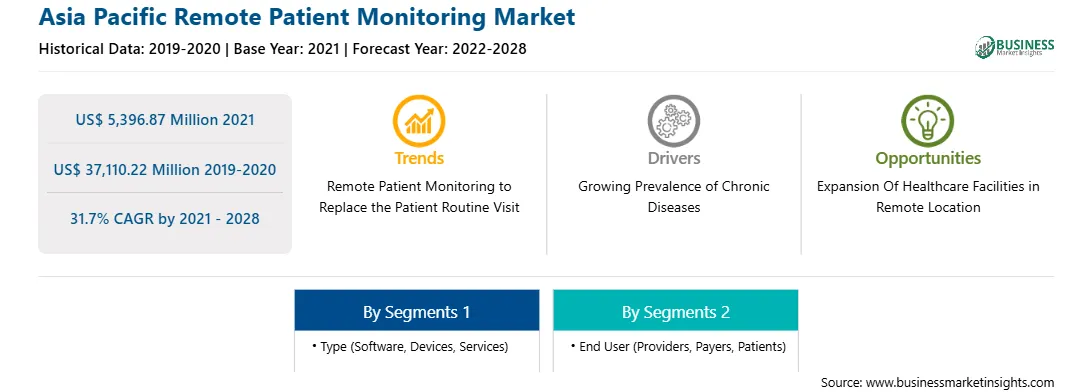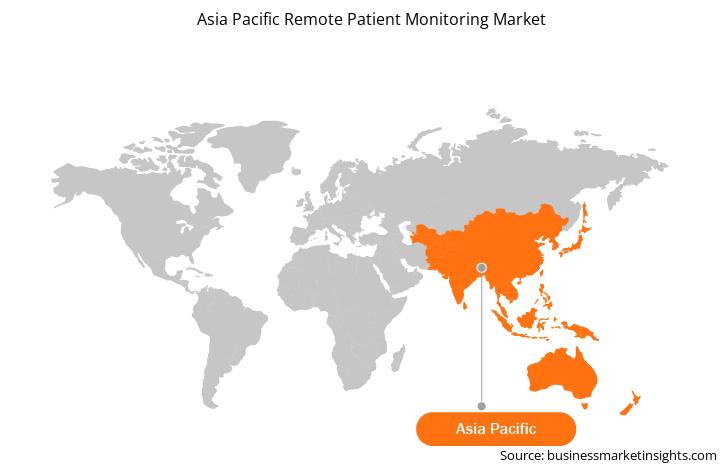China is fastest growing market for in Asia Pacific scenario. China, India and Japan are three major contributors to the growth of the market that is driven by growing emphasis on cost optimization, focus on streamlining of clinical processes, supportive government policies, and increasing number of clinical trials. China's healthcare industry is currently ranked second in the world, behind that of the United States. The Chinese government is urging hospitals all around the country to include the usage of the Internet into their medical practices. The goal is to encourage the use of telemedicine technologies, which would allow patients and clinicians in impoverished areas to consult with the country's best doctors, who are generally based in larger cities such as Beijing and Shanghai. The number of outpatients at top-tier hospitals in major cities has consistently grown in recent years. Medical expenditures are becoming a financial hardship for families, and high-end medical resources are falling short of fulfilling public demand. In China, hospitals are classified into three categories based on their abilities to provide medical care, medical education, and medical research. Hospitals are classified as Primary, Secondary, or Tertiary institutions based on this. Within the three-tier hospital structure, the top two levels of hospitals will be pushed to offer online services, such as consultations, reservation and test enquiry. During the COVID-19 outbreak, the country's National Health Commission (NHC) encouraged people to use internet-based medical services to limit population movement and infection risk. As a result, the number of users and participation on China's online medical platforms has skyrocketed.
Countries in the Asia Pacific are facing increasing incidences of COVID-19. The 2019 novel coronavirus (2019-nCoV), officially named COVID-19 by the WHO, has spread to more than 170 countries, including China prompting the WHO to declare the disease as a global pandemic. Accompanying the catastrophic loss of life that the virus has caused is the impact on the global economy, which has reeled from the effects of the pandemic. The COVID-19 pandemic has critically impacted the region, but it has also provided an opportunity for stakeholders to realign their future path based on strategic intent and focus. Moreover, various companies such as have been manufacturing patient monitoring devices with biosensors for easy and quick results. Beginning in China, this evolved into a deadly pandemic, subsequently affecting various countries in the Asia Pacific region. Reports have indicated that amid this pandemic, the usage of a pulse oximeters in hospitals and at home has increased substantially. The government in some countries are providing reimbursement for pulse oximeter purchase. For instance, in June 2020, the Union health ministry of Asia Pacific has decided to reimburse the cost of pulse oximeter purchased by beneficiaries Central Government Health Scheme (CGHS), who are tested positive as a supportive measure for COVID-19 patients monitoring at-home care during the pandemic.

Strategic insights for the Asia Pacific Remote Patient Monitoring provides data-driven analysis of the industry landscape, including current trends, key players, and regional nuances. These insights offer actionable recommendations, enabling readers to differentiate themselves from competitors by identifying untapped segments or developing unique value propositions. Leveraging data analytics, these insights help industry players anticipate the market shifts, whether investors, manufacturers, or other stakeholders. A future-oriented perspective is essential, helping stakeholders anticipate market shifts and position themselves for long-term success in this dynamic region. Ultimately, effective strategic insights empower readers to make informed decisions that drive profitability and achieve their business objectives within the market.

| Report Attribute | Details |
|---|---|
| Market size in 2021 | US$ 5,396.87 Million |
| Market Size by 2028 | US$ 37,110.22 Million |
| Global CAGR (2021 - 2028) | 31.7% |
| Historical Data | 2019-2020 |
| Forecast period | 2022-2028 |
| Segments Covered |
By Type
|
| Regions and Countries Covered | Asia-Pacific
|
| Market leaders and key company profiles |
The geographic scope of the Asia Pacific Remote Patient Monitoring refers to the specific areas in which a business operates and competes. Understanding local distinctions, such as diverse consumer preferences (e.g., demand for specific plug types or battery backup durations), varying economic conditions, and regulatory environments, is crucial for tailoring strategies to specific markets. Businesses can expand their reach by identifying underserved areas or adapting their offerings to meet local demands. A clear market focus allows for more effective resource allocation, targeted marketing campaigns, and better positioning against local competitors, ultimately driving growth in those targeted areas.

The remote patient monitoring market in Asia Pacific is expected to grow from US$ 5,396.87 million in 2021 to US$ 37,110.22 million by 2028; it is estimated to grow at a CAGR of 31.7% from 2021 to 2028. With a rise in cases of chronic illnesses such as diabetes and hypertension, there has been a rise in awareness regarding one’s health. Also, in recent days, there has been a significant rise in the number of individuals suffering from heart related disorders. These factors have enhanced the importance of maintaining health among the population in the developed as well as the developing nations. The demand for various health monitoring devices for maintaining a track of health status has increased significantly in the recent years. Also, there has been a rise in number of specialty clinics and home healthcare business in countries such as India. Asia Pacific is anticipated to offer significant growth opportunity during the forecast period, owing to increasing disposable income as well as the rate of urbanization in the leading economies such as Japan, China, and India. The use of handheld and wearable devices for monitoring vital signs has been high among the old age population as well as millennial. Owing to the growth in awareness regarding health, the market for remote patient monitoring devices is anticipated to witness significant growth during the forecast period.
In terms of type, the devices segment accounted for the largest share of the Asia Pacific remote patient monitoring market in 2021. In term of end user, provider segment held a larger market share of the remote patient monitoring market in 2021.
A few major primary and secondary sources referred to for preparing this report on the remote patient monitoring market in Asia Pacific are company websites, annual reports, financial reports, national government documents, and statistical database, among others. Major companies listed in the report are Koninklijke Philips N.V.; Nihon Kohden Corporation; Medtronic; General Electric; Cerner Corporation; Siemens Healthineers AG; Boston Scientific Corporation; Omron Healthcare; and Abbott among others.
The Asia Pacific Remote Patient Monitoring Market is valued at US$ 5,396.87 Million in 2021, it is projected to reach US$ 37,110.22 Million by 2028.
As per our report Asia Pacific Remote Patient Monitoring Market, the market size is valued at US$ 5,396.87 Million in 2021, projecting it to reach US$ 37,110.22 Million by 2028. This translates to a CAGR of approximately 31.7% during the forecast period.
The Asia Pacific Remote Patient Monitoring Market report typically cover these key segments-
The historic period, base year, and forecast period can vary slightly depending on the specific market research report. However, for the Asia Pacific Remote Patient Monitoring Market report:
The Asia Pacific Remote Patient Monitoring Market is populated by several key players, each contributing to its growth and innovation. Some of the major players include:
The Asia Pacific Remote Patient Monitoring Market report is valuable for diverse stakeholders, including:
Essentially, anyone involved in or considering involvement in the Asia Pacific Remote Patient Monitoring Market value chain can benefit from the information contained in a comprehensive market report.